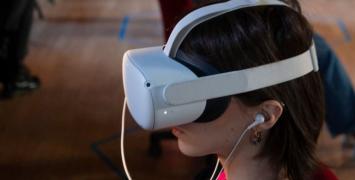From animal behaviour to football statistics

What do ant colonies, fish schools, and football teams have in common? Similar logical structures that govern their behaviour. With an ERC Starting Grant, mathematician Prof. David Sumpter developed models to understand how individual animals interact with each other in groups. Now, with an ERC Proof of Concept grant, Sumpter is using the same tools to study the collective actions of football players during matches.
What brought you from doing research on the collective behaviour of fish and ants to study football?
Since finishing my initial ERC Starting Grant project, I have been thinking about taking all the tools I had developed for modelling animal behaviour and applying them to a completely different and potentially commercial field. I decided to look at football because it offered the most interesting opportunities.
It turned out that there are lots of different ways to look at footballers' behaviour. You can use game theory, the players' positioning on the field, or their movement, which is very similar to that of fish or birds trying to find optimal positions in a group. We used statistics, machine learning, visualisations and artificial intelligence to develop a new type of algorithm for evaluating football players' performance.
It is a lot of fun and very different from working on animal behaviour to work on football. I am grateful for the Proof of Concept grant which provided this type of amazing opportunity to do something completely different.
How does the algorithm work?
Every time a player touches the ball during a match, the interaction is assigned a value which is then used to calculate his or her performance. For example, if the player scores a goal, he gets 1000 points. However, we did not want to award only the players who score goals. Instead, we converted every action that a player makes into a probability of scoring. For example, if a player makes a very good pass forward towards the goal, it increases the chance of a goal by 20%. Then the player would get 200 points. If it is a pass further back in the field, the player would get only 5 points, as the pass increases the chance of a goal only by 0.5%.We converted every action that a player makes into a probability of scoring
What are some practical applications of your algorithm?
Helping football scouts find new talented players was one idea, but what became clear to us quite early on was that young football fans like to have lots of statistics about player evaluations, and are also keen on mobile apps that they can play with while watching football. We decided that our main market would be these fans, to help them understand the game and make their experience more enjoyable.
Are any of your ideas moving closer to market?
Yes, a few. We already created a website twelve.football, where users can look at past matches and see how our player rankings compare to their own way of ranking a game. We have been developing a chatbot which, instead of just stating what happens during a match, could evaluate the last 20 actions of a match and say something intelligent about them. We also designed an app called "Twelve" which allows users to track how players perform during a match and ranks their performance. Our intention is to develop it into a full fantasy football game in which users can select their ideal team and compete with other app users.
The World Cup is currently underway. Could your app be used while watching the games?
The app can be used while watching any football game. The World Cup is really important for us to attract new users, because many people who are not normally interested in football might be watching. At the moment, thanks to the ERC Proof of Concept grant, the app is available for free. Eventually, once we have enough users, we can start thinking about ways to commercialise the product.
What are your aims for future research?
My ambition is to create a mathematical media group that reporters could contact if they need help with explaining how certain algorithms function or affect our lives. It could be a group of mathematicians who can then immediately set to work analysing the algorithm and give the answers the reporters need.
In the past, I was spending a lot of time working on a particular research problem, and communicating about it was just an afterthought. My recent experiences have really changed my view on that.






